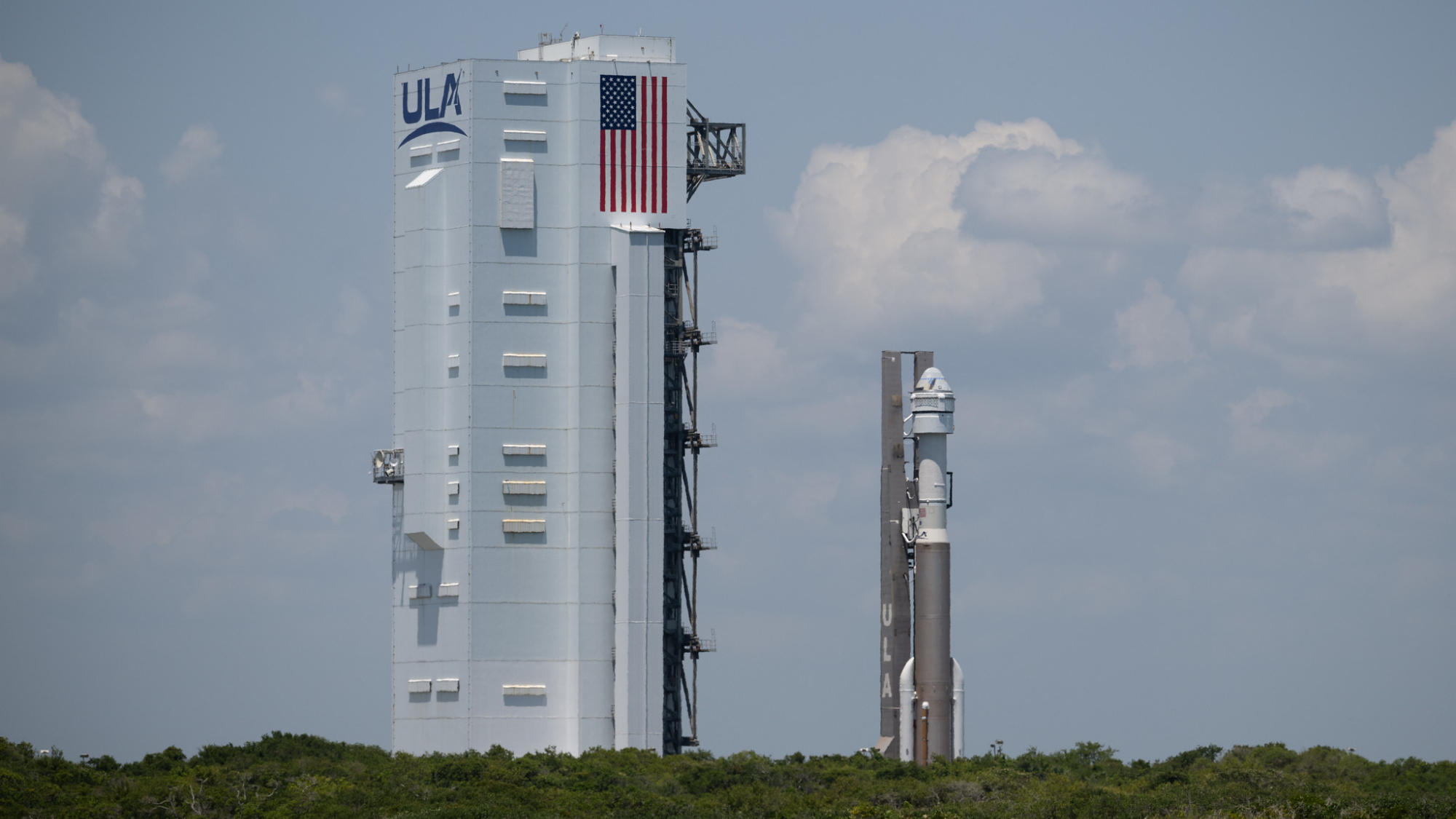
Boeing's Starliner capsule has left the launch pad.
Starliner and its rocket ride, a United Launch Alliance (ULA) Atlas V, rolled off the pad at Florida's Cape Canaveral Space Force Station today (May 8), heading to an assembly building at the site so scientists can replace a misbehaving valve in the launcher's upper stage.
The duo could be back soon, however: They're scheduled to launch no earlier than May 17, kicking off Starliner's first-ever astronaut mission, a trial run to the International Space Station (ISS) called Crew Flight Test (CFT).
Related: Boeing Starliner 1st astronaut flight: Live updates
Teams from @ulalaunch have returned the #Starliner and Atlas V rocket to its integration facility to replace a valve on the rocket’s upper stage. @NASA’s @BoeingSpace Crew Flight Test is targeted to launch no earlier than 6:16pm ET May 17. More: https://t.co/8Wxbz9eq7h pic.twitter.com/jZmhTU1v1wMay 8, 2024
CFT was originally supposed to launch on Monday night (May 6), but the mission team called things off about two hours before liftoff after noticing that an oxygen relief valve in the Atlas V's Centaur upper stage was opening and closing rapidly. This repeated action was audible; team members described it as a "buzzing."
The planned launch was then pushed to no earlier than Friday (May 10). However, that new target date became untenable after ULA decided that the buzzing valve needed to be replaced, an operation that required rolling the Starliner-Atlas V stack back to its integration facility.
If CFT does indeed launch on May 17, it will happen at 6:16 p.m. EDT (10:16 p.m. GMT). Whenever the mission indeed lifts off, you can watch the action live here at Space.com, courtesy of NASA.
Get the Space.com Newsletter
Breaking space news, the latest updates on rocket launches, skywatching events and more!
CFT will send NASA astronauts Butch Wilmore and Suni Williams to the ISS for a roughly eight-day stay. The mission is designed to certify Starliner for long-duration flights to the orbiting lab, which Boeing will fly under a $4.2 billion contract awarded by NASA's Commercial Crew Program in 2014.
SpaceX also received a similar deal, worth $2.6 billion. Elon Musk's company has already completed seven operational crewed missions to the ISS for NASA using its Dragon capsule and Falcon 9 rocket; it's in the middle of its eighth such flight, which launched in March.
Join our Space Forums to keep talking space on the latest missions, night sky and more! And if you have a news tip, correction or comment, let us know at: community@space.com.

Michael Wall is a Senior Space Writer with Space.com and joined the team in 2010. He primarily covers exoplanets, spaceflight and military space, but has been known to dabble in the space art beat. His book about the search for alien life, "Out There," was published on Nov. 13, 2018. Before becoming a science writer, Michael worked as a herpetologist and wildlife biologist. He has a Ph.D. in evolutionary biology from the University of Sydney, Australia, a bachelor's degree from the University of Arizona, and a graduate certificate in science writing from the University of California, Santa Cruz. To find out what his latest project is, you can follow Michael on Twitter.
-
billslugg I will assume, for this comment, we are dealing with a standard concept, a disc held in place by a spring pushing on it. Such a valve will lift when popped, stay slightly open until the pressure drops a bit then reseat once the excess pressure is relieved. In order for the valve to chatter, something has to be bad wrong somewhere, and it might not be the valve. It could be an obstruction which limits flow to the valve.Reply -
CraigofTruth It seems to me as a complete novice that Boeing along with United Launch Alliance are playing with fire by using inferior valve systems. Like the saying goes, "Penny wise but (Pound) Dollar Foolish" in Boeing and United Launch Alliance's case it is, "Hundreds of Dollars saved but Millions of Dollars foolish."Reply -
bolide Reply
Amazing that, from your armchair, you can deduce that the problem is "using inferior valve systems." Have you contacted ULA about this?CraigofTruth said:It seems to me as a complete novice that Boeing along with United Launch Alliance are playing with fire by using inferior valve systems. Like the saying goes, "Penny wise but (Pound) Dollar Foolish" in Boeing and United Launch Alliance's case it is, "Hundreds of Dollars saved but Millions of Dollars foolish." -
Unclear Engineer OK, let's get real, here.Reply
The relief valve with the problem is on the Centaur upper stage and is used to vent the liquid oxygen tank to limit pressure. It is specifically designed for that function, and is not just a simple disk and spring assembly - it has a geometry that is designed to be stable during venting and have a high reliability of sealing when reseating. Liquid oxygen has long been used as the oxidizing propellant in rockets, so this is not likely to be some sort of new design problem.
The Centaur upper stage was designed by Convair/General Dynamics and later Lockheed-Martin. So, it comes to the Boeing/Lockheed-Martin "United Launch Alliance" from the Lockheed Martin side, not the Boeing side. It has been used for many tasks in many variants for a long time. See https://en.wikipedia.org/wiki/Centaur_(rocket_stage) .
The long and detailed pre-launch "count-down" process is specifically designed to deal with the "s__t happens" aspects of flying rocket vehicles. This just looks to me like another example of finding a problem before liftoff and fixing it. The goal is a safe flight for the astronauts, not meeting some "do or die" schedule.
So, I do not see any reason to blame Boeing for this particular delay.








